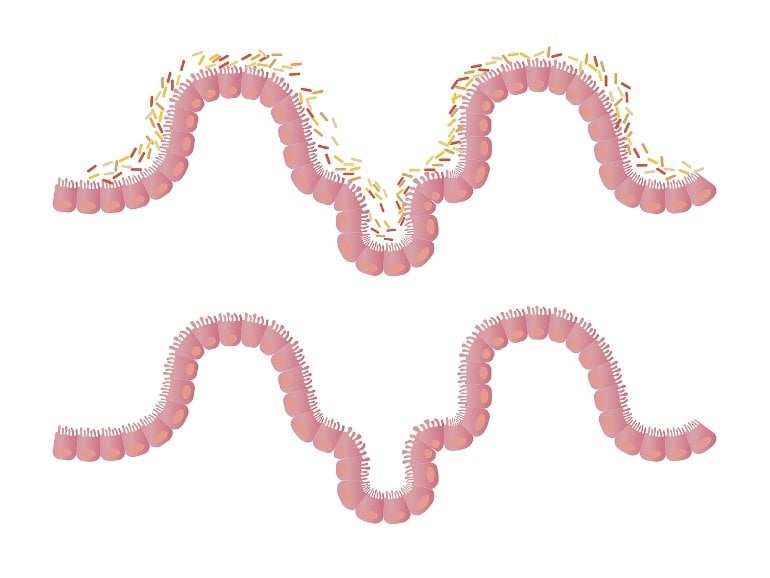Summary: Study reveals a strong connection between certain bacteria residing in the gut and metabolites, small molecules found in the blood.
Source: Uppsala University
There are strong links between bacteria living in the gut and the levels of small molecules in the blood known as metabolites. Such is the finding of a new study led by researchers from Uppsala University and Lund University, which is now published in the journal Nature Communications.
A team of scientists coordinated by Uppsala University and Lund University has found strong links between certain bacteria living in the gut and small molecules found in the blood. The study is based on analyses of both fecal and blood samples from 8,583 participants in the Swedish CArdioPulmonary bioImage Study (SCAPIS).
The findings have now been published for the first time in Nature Communications, and have further been made freely available to the research community through an online atlas.
The aim of the project was to contribute to the expanding knowledge base concerning how gut microbiota influence human health.
“Earlier studies have shown that the large bacterial community in our digestive system produce a variety of molecules, with the potential to enter the bloodstream and to impact our health. Conversely, medication or dietary components may affect the microbiota composition before entering the circulation.
“Characterisation of these interactions is an important step towards understanding the effects of the gut microbiota on health,” says Tove Fall, Professor of Molecular Epidemiology at the Department of Medical Sciences and the Science for Life Laboratory, Uppsala University, who coordinated the study together with researchers from Lund University.
Recent technological advances have enabled large-scale deep characterisation of bacterial communities in biological samples. This is done by sequencing the DNA content of the samples and comparing the results to DNA sequences from known bacteria. Advances in chemistry have further enabled large simultaneous screens of blood samples in order to measure small molecules.
The SCAPIS study represents one of the largest collections in the world of both of these kinds of data. In this study scientists investigated the links between the gut microbiota and the small molecules in the blood.

“The gut microbiota is a universe of its own and we have just started to understand how the human host and the bacterial community affect each other. Our results show that for certain blood metabolites, the bacteria you carry in the gut constitute a strong determinant,” notes Marju Orho-Melander, Professor of Genetic Epidemiology, Lund University, and one of the senior authors of the study.
The scientific team believes that the breadth of findings may spur the interest of other international groups focusing on gut microbiota and host interactions, and has therefore opted to publish all the associations on a public website hosted by SciLife Data Centre in Uppsala.
“The large number of samples containing high quality data allowed us to identify many novel associations. We have therefore chosen to publish all of our findings in an online open resource for the research community to use for their varying needs,” says Koen Dekkers, lead author from Uppsala University.
About this microbiome research news
Author: Elin Bäckström
Source: Uppsala University
Contact: Elin Bäckström – Uppsala University
Image: The image is in the public domain
Original Research: Open access.
“An online atlas of human plasma metabolite signatures of gut microbiome composition” by Tove Fall et al. Nature Communications
Abstract
An online atlas of human plasma metabolite signatures of gut microbiome composition
Human gut microbiota produce a variety of molecules, some of which enter the bloodstream and impact health. Conversely, dietary or pharmacological compounds may affect the microbiota before entering the circulation.
Characterization of these interactions is an important step towards understanding the effects of the gut microbiota on health. In this cross-sectional study, we used deep metagenomic sequencing and ultra-high-performance liquid chromatography linked to mass spectrometry for a detailed characterization of the gut microbiota and plasma metabolome, respectively, of 8583 participants invited at age 50 to 64 from the population-based Swedish CArdioPulmonary bioImage Study.
Here, we find that the gut microbiota explain up to 58% of the variance of individual plasma metabolites and we present 997 associations between alpha diversity and plasma metabolites and 546,819 associations between specific gut metagenomic species and plasma metabolites in an online atlas (https://gutsyatlas.serve.scilifelab.se/).
We exemplify the potential of this resource by presenting novel associations between dietary factors and oral medication with the gut microbiome, and microbial species strongly associated with the uremic toxin p-cresol sulfate.
This resource can be used as the basis for targeted studies of perturbation of specific metabolites and for identification of candidate plasma biomarkers of gut microbiota composition.






